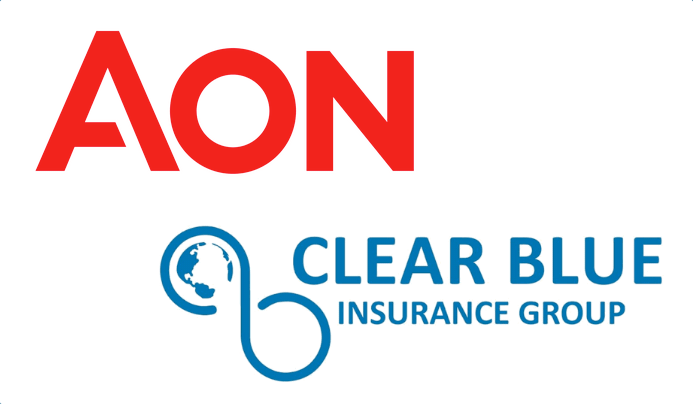People always ask Google for stock price predictions as if someone actually knows. They’re making a fundamental mistake newbies often make – investing in stocks instead of companies. The only thing we can be certain of is the old adage, “it’s about time in the market, not timing the market.” That’s provided you’re investing in quality companies that don’t implode. If you’re investing in risky spaces, some always will, which is why you diversify your portfolio.
Catching falling knives refers to investors who continue to purchase shares of a stock as it falls without knowing where the bottom will be. To avoid this problem, we limit the total amount of capital committed to any position. Once that’s exhausted, we don’t purchase additional shares, even if they’re trading at a 90% discount. That’s precisely where we’re at with Invitae (NVTA).
The Good News

A company’s management team should always focus on what’s most important. When the conversation changes from growth to survivability, that should raise some eyebrows. Risk-averse investors who look at Invitae with a fresh set of eyes will notice how much emphasis was placed on the recent transaction which largely removes concerns around debt coming to maturity in 2024.

The debt seen above is convertible debt which means lenders can choose to accept equity instead of cash when it comes time for repayment. The recent $350 million in financing converts to 118,316,667 shares at $2.58 a share. Do the math yourself and see how it works (118,316,667 X $2.58 = $305 million). So, if by 2028 shares of Invitae trade above $2.58, the lender will take ownership of 118,316,667 shares. That means existing shareholders will be significantly diluted. With 245 million current shares outstanding, that means the pie increases by 48%. The below example shows how dilution affects share price (all things being equal):
- BEFORE: Market cap = $455 million / 245 million shares = $1.85 a share
- AFTER: Market cap = $455 million / 363 million shares = $1.25 a share
As for the other $1.15 billion in debt on the books due in 2028, this represents convertible notes that convert at a share price of $30 per share or more. Investors can only hope that dilution happens.
Surviving, Not Thriving
Invitae’s biggest focus right now is on surviving, not thriving. Four years from now, they need to come up with $1.45 billion when the debt collector comes knocking. They’ll likely need to refinance some or all of that amount, not to mention raise capital to continue operating their business. We’re told cash on hand will last through 2024, so then they’ll need to raise more money for four more years of runway before the debt becomes due. The alternative is to start generating cash through their own operations. When looking at the company’s mission statement, it implies margins will be shrinking, not expanded.
Invitae’s goal is to aggregate the world’s genetic tests into a single service with higher quality, faster turnaround time, and lower prices.
And indeed, they are.
We don’t pay attention to “non-GAAP” financial numbers because companies can define them in a myriad of ways. We focus on Invitae’s GAAP gross margins, which shrunk from 24% in 2021 to 19% in 2022. It’s a concern we raised in last year’s piece on Here’s Why Invitae Stock Can’t Stop Falling.
So, their ability to generate cash is decreasing, which means we need to see very strong revenue expansion to offset this. Unfortunately, revenue growth is now on the decline, contrary to the 15-25% growth the company has been telegraphing to analysts. When this contradiction is raised in the most recent earnings call, the answer is predictable as death and taxes. (Say it together everyone.) “Macroeconomic headwinds” are what’s keeping Invitae from realizing their true potential as a genetic testing leader.
A Genetic Testing Leader
Leaders sell stuff. For Invitae, this “stuff” represents genetic tests being administered to patients across domains such as oncology, women’s health, and rare diseases. They also sell the data received from these tests which represented 9% of revenues last year. Invitae’s investor decks provide three high-level measurements that show the overall growth of the business. Here are the quarter-over-quarter increases for all three key metrics over the past six quarters.
| Q3-2021 | Q4-2021 | Q1-2022 | Q2-2022 | Q3-2022 | Q4-2022 | |
| Active Accounts | 7.5% | 6.1% | 5.3% | 4.0% | 3.0% | 0.5% |
| Patients Served | 12.9% | 11.0% | 11.9% | 9.5% | 9.7% | 5.9% |
| Partners | 10.5% | 5.3% | 15.7% | 12.6% | 0.9% | 1.7% |
The trends are obvious. We’re told it’s the “same mission, new path” as they move from “volume focused” to “profitable growth.” In other words, don’t expect the above key metrics to improve anytime soon.
Curtailing costs means less fuel for the growth engine. As margins shrink, the growth prospects become less attractive. Invitae needs cash to continue operating which comes in the form of debt and equity. Investors who look to provide this capital see this opportunity increasingly less appealing.
- Lenders see the existing debt as an impediment to their own loans being repaid
- Purchasers of equity see the business less attractive as growth slows and margins are squeezed
It’s hard to see the glass half full right now, which is why Invitae commands a simple valuation ratio of less than one (compared to our catalog average of six).
Selling Invitae Stock
We sell a disruptive technology stock for two reasons.
- Revenue growth stalls. For how long you might ask? Typically, two years in a row is enough to show there’s a problem. If management is not sufficiently addressing the stalled growth, that’s a major problem (see Protolabs).
- Our thesis changes. This reason is more difficult to quantify, and will usually differ by company. For example, if a thesis doesn’t seem to have the large total addressable market we had originally imagined (see Xometry), or if management teams start to betray our trust (see Protolabs and Xometry).
When you’re holding a stock that’s fallen 90%, the position’s value will be miniscule relative to the rest of your portfolio. The temptation here is to say, “since the amount is so small, we’ll just let it ride.” That’s the lazy way out which deviates from our core investment methodology. Locking in losses is never comfortable, but we always need to be as objective as possible. Let’s start with revenue growth.
What do we consider to be “sufficient” revenue growth? In our minds, double-digit growth is a minimum requirement for a disruptive technology company (10% at least). It’s an arbitrary number, but round and easy to remember. Here’s what revenue growth looked like a year ago before Invitae totally missed 2022 guidance as cost cutting took effect.

While the macroeconomic tide is affecting all growth ships these days, Invitae has been hit harder than most. Revenue growth has not just stalled, it’s vanished completely. Never mind the half-baked chart below which tries to imply revenue growth of “low double digits for 2023,” the reality is that they’re guiding for $500 million in 2023 which is less than the $516 million they brought in for 2022.

The reality is that for 2023, revenue growth for Invitae will be on the decline for the first time.
As for our original thesis – investing in a genetics testing leader – that’s best measured by volume. If genetics tests will provide the foundation of personalized healthcare, then we need to see a consistent increase in the number of patients who are being administered such tests. That growth appears to be slowing, and Invitae admits that it’s no longer about volume (bad sign).
It all comes down to this. If genetics testing provides loads of value for patients, then it should be selling itself at this point. The partners are there, there are plenty of active accounts, and plenty of patients who have taken the tests which demonstrate their value. If that’s not apparent, then maybe this is a case of spending $1.50 for $1.00 in growth.
Revenue growth is a proxy for market leadership. It’s bad enough they’re having a tough time surviving, but now that they’ve lost that revenue growth, what’s the point in continuing to hold shares? It’s moved from being an exciting growth story to a risky turnaround story.
Not Loving Invitae
There’s another problem that arises with holding companies that go pear shaped. Our nomenclature for describing stocks – like/love/avoid – can create some confusion when it comes to the “love” category. When we say we “love” Invitae, it means we’re holding the stock. Were we not holding the stock, we’d classify it as an “avoid” because their financial situation is far too precarious, and growth has evaporated. They’re focused on surviving, not thriving. The recent financing news is just another Band-Aid of which many will be needed prior to the $1.45 billion coming due in 2028.
Looking at our portfolio of 38 tech stocks says nothing about what our portfolio would look like if we had to build it today. For that reason, we’ll be holding quarterly calls with paying subscribers to review our holdings and provide commentary that’s independent of our own positions. The first of these calls will be held in late April.
Conclusion
The current bear market has hammered growth stocks across the board, something that’s all but expected, but it’s also doing investors a service in rooting out the companies which don’t really have the growth prospects labeled on the tin. Business models with declining gross margins, and that require loads of overhead to generate revenue growth, aren’t sustainable because they become less attractive over time. As the Oracle of Omaha once said, “only when the tide goes out do you discover who’s been swimming naked.”
Tech investing is extremely risky. Minimize your risk with our stock research, investment tools, and portfolios, and find out which tech stocks you should avoid. Become a Nanalyze Premium member and find out today!








































